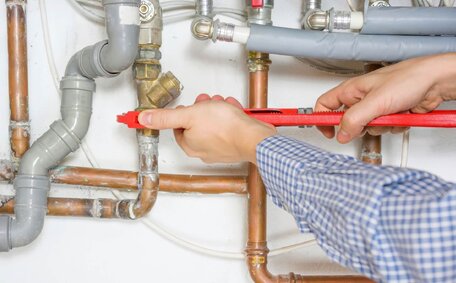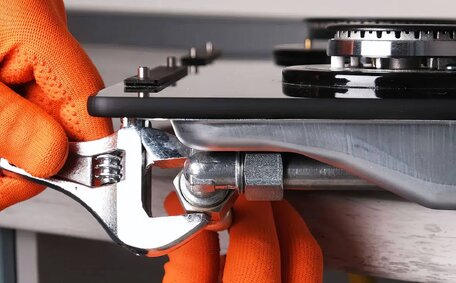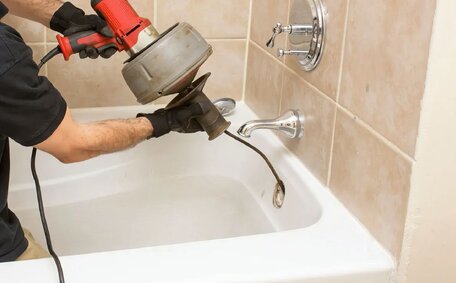
Sustainable Gas Solutions
There are renewable and sustainable gas solutions that can build a greener future. Gas has a key role enabling the transition to renewable energy while reducing emissions.
Read MoreThere are several common causes of low water pressure in homes:
In many scenarios, pipe relining your system leaves no question that it can save you from low pressure caused by clogs, leaks, corrosion damage, or scale build-up, effectively repairing the issue. Pipe relining, specifically trenchless cipp, seamlessly integrates a new lining within your existing pipes, restoring flow capacity and enhancing pressure without the requirement to replace entire pipe sections.
Pipe relining effectively addresses issues such as cracks, breaks, tree root invasion, and corrosion, These problems also severely restrict water flow and pressure, but with a new lining, such issues can be addressed to restore system efficiency. As pipes sustain damage, their flow rate diminishes over time. The earlier damage to your drains is detected to fix leaks and prevent tree root intrusion, the better - before flow is impacted.
Cracks and breaks in sewer systems, which may necessitate sewer pipe relining, allow water to leak out, decreasing flow to fixtures. They also become entry points for tree root intrusion, soil, and contaminants, which is why pipe relining best addresses these issues. With the right pipe relining company and repair methods, pipe relining can not only fix leaks and prevent tree roots from entering but also extend life of your pipes and safeguard against further damage that might occur over time.
Replacing damaged pipes affected by corrosion such as rust and mineral buildup can steadily reduce the flow capacity in your water system. The inside diameter narrows as the rough mineral coating accumulates. Old galvanised and steel pipes, often used repair materials, are prone to internal rust over decades of use.
Catching damaged pipes early allows non-invasive relining pipe repairs to patch cracks, seal intruding roots, and smooth internal corrosion - all restoring lost flow capacity and water pressure without having to replace entire pipe sections.
A professional inspection assessing the pipe’s condition is essential to determine if pipe relining is the best solution, taking into account:
CCTV drain cameras, indispensable tools for inspection, are deployed to ensure interior pipe conditions are thoroughly assessed without missing any problem areas. This helps determine if relining will adequately repair damage versus pipe replacement being needed.
A CCTV drain camera is an effective method for assessing pipe relining possibilities will effectively repair damage as opposed to requiring full pipe replacement. Camera inspection meticulously checks for interior pipe issues, including cracks, leaks, blockages, and corrosion.
CCTV footage allows a precise evaluation of extent and type of damage, and whether repair is feasible by sealing joints or cracks, removing blockages, and applying an internal pipe lining. For instance, areas with multiple fractures or collapses typically necessitate replacement.
Camera inspection pinpoints problem areas, facilitating a custom pipe relining plan that focuses solely on damaged sections. It shows if long sections have mineral build-up indicating flow issues that relining can improve.
CCTV inspections play a crucial role in deciding whether trenchless pipe relining is suitable or whether excavation and replacement are warranted.
While pipe relining can be the ideal choice, it is not suitable for pipes that are extensively damaged, at which point full replacement may be essential. Pipe replacement is recommended rather than relining when:
In cases of extreme damage, attempting to reline broken pipes may ultimately fail or not adequately resolve water flow and pressure issues. Replacing the damaged pipes fully excavating the pipe sections is then the better permanent solution.
The pipe relining process entails inserting a resin-saturated liner into the damaged pipe and curing it to form a smooth, protective inner barrier. Here is an overview of the key steps:
A key benefit of trenchless pipe relining is that pipes without digging can be repaired, as the seamless epoxy or polyester lining creates a "pipe within your pipe" once set. It is structurally sound on its own and protects against future corrosion and cracks. Installing this trenchless lining restores flow capacity, water pressure, and extends the pipe’s lifespan.
Pipe relining integrates a new liner into deteriorating pipe systems, A resin-soaked felt tube is inserted and inflated within pipes requiring repair. It is then cured using heat or UV light to harden into a smooth, seamless pipe lining.
This internal liner creates a durable barrier, frequently outperforming the original pipe in strength. Epoxy resins used in the relining process are rigid plastics resistant to corrosion and scratches. The new liner ensures the pipe can relined to restore flow capacity and protect against future damage.
Understanding the functionality of pipe relining is crucial; it not only resolves pipe issues but also offers a long-lasting solution with minimal excavation. This trenchless solution is more sustainable than traditional replacement requiring extensive digging.
Epoxy resin, chosen for its durability, strength, and corrosion resistance, is suitable for the pipe relining process. Once set, it forms a robust barrier that protects pipes from future damage.
Epoxy resins, which can be used effectively, are far less susceptible to water exposure degradation over decades. The material is a rigid plastic that bonds firmly to the inside of pipes in your homes. This creates a smooth, seamless lining that will not scratch, crack or peel - outlasting lower quality lining materials.
The resin’s adhesive properties effectively seal leaks and mend cracks throughout the installation process. Overall, epoxy resin linings provide long-term durability, ensuring your pipes can relined to restore flow capacity to your damaged plumbing system.
Pipe relining effectively repairs leaks, blockages, cracks, and corrosion, enhancing water flow. The seamless internal pipe lining can fix leaks, prevent future ones, and patches cracks as it bonds to the interior walls. When hardened, it forms a smooth barrier that prevents future root intrusion or buildup accumulation.
Any pre-existing leaks, cracks, blockages or corrosion damage are covered and sealed by the new liner. This restores the pipe’s original flow capacity and water pressure. In fact, flow rates often improve as relined pipes can outperform older pipes in terms of smoothness and lack of friction loss.
With the capability to resolve pipe damage sans excavation or complete replacement, pipe relining is worth considering for enhancing flow and reducing property disruption. Understanding how pipe relining works is key; hence, homeowners should consider pipe improvements that also enhance flow by preventing future clogs, leaks and damage.
Pipe relining offers superior resistance to damage from tree root intrusion than traditional materials. Tree roots are attracted to small cracks and pipe joints seeking water. Over time the roots grow larger, intensifying pipe damage.
The seamless, jointless nature of epoxy or polyester resin linings leaves no gaps for roots to penetrate. The smooth inner lining also discourages root footholds from forming and becoming established.
Any small cracks or pipe access points still vulnerable to future root encroachment can be sealed off with a protective barrier spray. This further fortifies the relined pipe from invasive root growth which could compromise flow.
Property owners will find that the smooth, seamless surface of a relined pipe not only improves water flow rates but is a testament to the quality and durability of modern pipe repairs. By addressing existing damage and defects in plumbing drainage systems, the new relining can fix leaks and minimise friction loss as water travels through.
The uniform diameter and jointless design also minimises turbulence. This allows water to flow faster and more efficiently through the piping system, directly increasing usable water capacity.
Higher flow capacity equates to improved pressure your fixtures feel, resolving low pressure issues caused by ageing, damaged plumbing. So relining restores flow rates and pressure by installing a smooth, integrated lining that maximises each pipe’s water capacity.
Pipe relining brings substantial benefits over traditional methods like full pipe replacement:
Relining repairs pipes internally, offering a cost-effective, non-invasive alternative that extends system lifespan without lawn excavation, all at a lower cost than replacement.
As mentioned, the more you know about pipe relining the more you understand its effectiveness as a trenchless repair method to improve low water pressure, flow capacity, and resolve pipe damage issues. Relining provides a smooth, protective barrier inside your existing pipes - restoring function without major digging or replacement expenses.
If you’re experiencing plumbing problems like reduced water pressure, leaks, or signs of internal corrosion damage, request a call back today for an expert assessment from a pipe relining specialist in our team.
Inner West Plumbing specialises in utilizing CCTV drain cameras for pipe inspections to ascertain if epoxy pipe relining is suitable for your plumbing needs.
To learn more about how we can enhance your system, and for a personalised quote on our pipe relining services, call us at 1300 349 338 or email jobs@innerwestplumbingservices.com.au. We service properties across Sydney’s Inner West and can help resolve your plumbing issues with minimal disruption to your property.
Our experts can provide straightforward advice tailored to your needs after thoroughly inspecting your pipes.
There are renewable and sustainable gas solutions that can build a greener future. Gas has a key role enabling the transition to renewable energy while reducing emissions.
Read MoreGas leaks can cause headaches, nausea, breathing issues and even carbon monoxide poisoning. Long term exposure poses serious health risks. Call us to fix any gas leak and avoid the dangers - Inner West Plumbing
Read MoreTree roots are the #1 cause of blocked drains as they invade pipes seeking water. Call Inner West Plumbing on XXXX XXX XXX to inspect & clear roots.
Read MoreInner West, NSW
We will call back as soon as possible.




